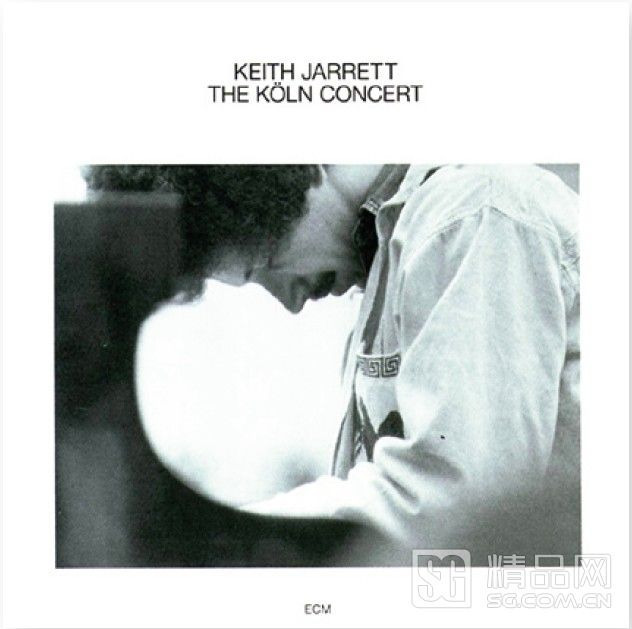The Koln Concert是史上最暢銷鋼琴獨奏專輯,於1975年1月24日發行。
基本介紹
- 中文名:The Koln Concert
- 發行時間::1975年1月24日
- 專輯歌手::Keith Jarrett
- 地區::美國
簡介,專輯介紹,專輯曲目,演奏家介紹,
簡介
中文名稱:The Koln Concert
專輯名稱:The Koln Concert
作 曲 家:Keith Jarrett
演 奏 家:Keith Jarrett
發行公司:ECM Records
原版日期:01/24/1975
再版日期:11/16/2000
音樂流派:Jazz/Modern Post-bebop
采 樣 率:549 kbps
專輯介紹
Amazon.com essential recording
Keith Jarrett在1975年的科隆演奏會(The Koln Concert)是爵士音樂史上的一個奇蹟,是即興作曲/鋼琴獨奏的永恆經典,幾乎達到了一個不可企及的高度。
科隆演奏會時的Keith Jarrett正處於一個鋼琴家的巔峰時期,而這場演奏會背後的故事也頗耐人尋味:由於不得不使用一架音色不夠完美的鋼琴——偏弱的較高、低聲部,讓Keith選擇集中於彈奏鋼琴的中部,結果創作出有別於Keith以往所有作品的全然不同的音樂語言。
這裡你將聽到的每一個音符、每段旋律、篇章都是來自鋼琴家自發性的即席創作——持續翻滾的節奏通過Keith強有力的左手產生出巨大的催眠力量,將你捲入他的思維、靈魂,經歷一片超越語言的詩意與意境;源源不斷的靈感滑過Keith的十指,他不時的淺吟低唱仿佛自己都驚異於自己創造出的音樂——或許這音樂是來自正圍繞著他的繆斯的啟示,或許此時繆斯正附身於他,人們說這是一場‘通靈’的音樂會並不為過。
也如一些人指出的,其中第三首(Part IIB)是全場的高潮所在——它從Keith赤裸的心靈流淌出並直接進入你的靈魂、撼動它;而接近演奏會尾聲時,Keith選擇用一小段甜美的鋼琴小品(Part IIC)將你的靈魂輕輕的放回原處。
最後要說明的是,這場演奏會仍然是具有爭議的:由於它廣泛的接受度/流行度使其藝術價值受到一些質疑(這種觀點本身是荒謬的);另外這張專輯的直接後果之一——引發了包括George Winston在內無數New Age音樂家簡單化、表面化的模仿,作為這種潮流的‘始作俑者’它受到了不公正的指責,甚至Keith Jarrett本人都它的態度都是複雜的。
如果你還沒有聽過這場演奏會,那你將是非常幸運的——當最初發現它的美時,這種心情是難以言喻的。
專輯曲目
1 Part I (26:01)
2 Part II A (14:54)
3 Part II B (18:14)
4 Part II C (6:56)
# 專輯僅用於試聽, 請購買正版支持你欣賞的音樂家 #
演奏家介紹
One of the most significant pianists to emerge since the 1960s, Keith Jarrett's career has gone through several phases. He gained international fame for his solo concerts, which found him spontaneously improvising all of the music without any prior planning; but he has also led a couple of dynamic quartets/quintets, performed classical music, and later played explorative versions of standards with his longtime trio. Although his tendency to "sing along" with his piano now and then is distracting, Jarrett continued to grow as a powerful improviser after decades of important accomplishments.
Keith Jarrett started on the piano when he was three, and by the time he was seven he had already played a recital. A child prodigy, Jarrett was a professional while still in grade school. In 1962, he studied at Berklee, and then started working in the Boston area with his trio. He moved to New York in 1965, and spent four months with Art Blakey's Jazz Messengers. As a member of the very popular Charles Lloyd Quartet (1966-1969), Jarrett traveled the world and became well-known; he also began doubling occasionally on soprano (which he would utilize through the 1970s). During 1969-1971, he was with Miles Davis' fusion group, playing organ and electric keyboards; Chick Corea was also in the band for the first year. Jarrett can be heard "battling" Corea throughout Davis' Live at the Fillmore, but is in more creative form on Live/Evil.
Upon leaving Miles Davis, Keith Jarrett permanently swore off electric keyboards. He had cut sessions as a leader for Vortex (1967-1969) and Atlantic (1971), but starting in November 1971, he recorded extensively for ECM (in addition to some sessions in the 1970s for ABC/Impulse), an association that continued into the 2000s. In the 1970s, Jarrett led two groups: an exciting unit with Dewey Redman, Charlie Haden, Paul Motian, and occasional percussionists (often Guilherme Franco); and a European band with Jan Garbarek, Palle Danielsson, and Jon Christensen that recorded the popular "My Song." In addition, starting in 1972, Jarrett began his famous series of improvised concerts which resulted in such popular recordings as Solo Concerts, Köln Concert, and the mammoth Sun Bear Concerts. By the 1980s, Jarrett was performing classical music as much as jazz, but in the 1990s he recorded extensively (including a six-CD live set) with his "standards trio" that includes Gary Peacock and Jack DeJohnette. Although initially influenced by Bill Evans, Keith Jarrett has had an original and influential style of his own since the early '70s, and remains a vital force in jazz. ~ Scott Yanow, All Music Guide

